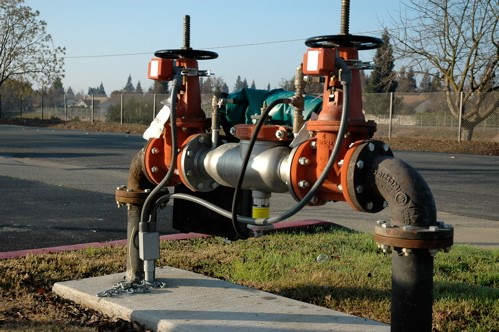The content listed below about Backflow Testing is incredibly insightful. Don't skip it.

Yes, you require to backflow examination your residence's water to guarantee that the water is devoid of toxins and hazardous degrees of chemicals. Due to the devices called for as well as room for mistake, you should not try to perform heartburn screening on your own. We advise that you call a specialist plumber every number of years to test your water.
What is Backflow?
In short, heartburn is when water moves upwards-- the opposite instructions in the plumbing system. This is also known as "backpressure." When the water moves in this instructions, it can combine with damaging contaminants and also posture a threat.
What Triggers Heartburn?
A typical cause of backflow is a loss of water stress that triggers the water to siphon back into the water supply. After some time, there is a loss in water pressure and the hose begins to suck the water back into the water supply. As you can imagine, there are now chemicals from the paint that are entering the water supply, potentially positioning a threat.
Heartburn Testing is Called For by Regulation in Specific Cities
Depending upon where you live, you may actually be required by legislation to backflow test your regulation. As an example, Iowa City keeps a record of all properties offered by the city's water system. The city needs that particular "high-hazard" centers undergo heartburn testing. In some cases, properties such as houses as well as apartment buildings are impacted.
You Can Prevent Heartburn
The main objective of a backflow gadget is to avoid water from moving backward into your water supply. Plumbing professionals set up the tool on the pipes in your house to make sure that the water just flows in the appropriate direction.
Heartburn Can Effect Both You and also Your City
Since unsafe heartburn can affect the public water supply in addition to a single structure, several cities establish backflow guidelines. Luckily, modern-day cities have backflow devices in place that safeguard the water that comes from many homes as well as business homes. The actual hazard originates from watering systems, which can hurt the water system with hazardous plant foods, manure, as well as other chemicals.
Call a Plumber to Evaluate for Heartburn Before It is Too Late
A plumbing business can quickly examine your house's water to determine if there are any hazardous chemical levels. And also if you do find that your water has high degrees of toxic substances, a plumber can conveniently install a heartburn prevention tool.
Yes, you need to backflow examination your home's water supply to make certain that the water is totally free of toxic substances and also dangerous degrees of chemicals. A common reason of backflow is a loss of water stress that causes the water to siphon back into the water supply. After some time, there is a loss in water stress and the tube begins to draw the water back right into the water supply. The major function of a heartburn device is to stop water from flowing backwards into your water supply. Several cities establish heartburn guidelines since unsafe backflow can impact the public water supply in enhancement to a solitary building.
WHY DOES BACKFLOW TESTING NEED TO BE DONE EVERY YEAR
What Is Backflow?
Toxic gas backing up into a building is one example of potential backflow issues, but backflow can occur in many other ways.
Backflow is generally referred to as the reversal of a liquid or gas in a plumbing system.
Most issues for the public occur with backflow resulting in contaminated drinking water. If you look up backflow issues online you’ll probably find references to “potable” water. That means drinking water.
There have been backflow issues in the past with drinking water. Chemicals, sewage and other contaminants have found their way into drinking water causing health issues for those that count on the fresh water.
What Causes Backflow?
In a residence or commercial building water generally flows one way. This normal flow is usually driven by consistent pressure in the water and waste system.
Anything that changes the normal pressure in the system can lead to backflow.
Fire hydrant use or malfunction can reverse the normal pressure in the system on a city line, but backflow can occur in a number of different ways.
Sometimes backpressure might be caused by someone using a garden hose and submerging the end of the hose in a pool of liquid. If pressure is lost the flow could reverse and contaminants could be released into the drinking water.
Anytime there is a connection between contaminants and the drinking water there is potential for a backflow issue. Sometimes these connections are not immediately obvious like the garden hose connecting to a building’s drinking water supply.
Backflow Regulations
The Environmental Protection Agency (EPA) provides guidelines and regulations for state and local governments regarding backflow. State and local governments also have their own guidelines and regulations for backflow prevention.
Arizona has its own backflow regulations.
Due to issues with backflow in the past, regulations require backflow preventer devices to be used in nearly all residential and commercial buildings.
A backflow preventer is a device that prevents backflow as cross-connection points where potential backflow issues may occur.
While backflow is not a common occurrence, preventers are in place to make sure there is no contamination should something malfunction or go wrong with a building’s water supply.

I discovered that blog post about What is Backflow Testing? when surfing around the internet. You should set aside a second to share this blog post if you enjoyed reading it. Thanks for going through it.
Get Estimate